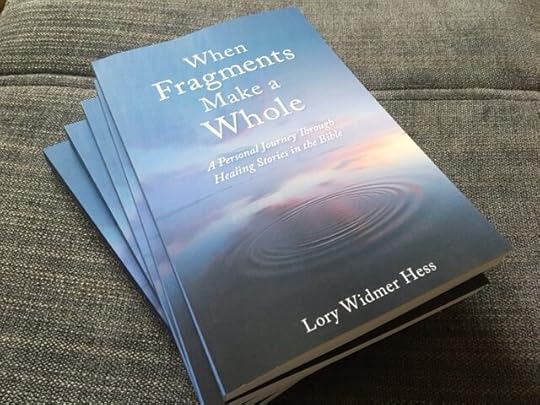Lory Widmer Hess's Blog, page 7
May 11, 2024
Reading the Theatre: What I read and watched (plus your contributions)
What I enjoy most about my month of Reading the Theatre is letting one thing lead to another…reading books and plays and watching movies or recorded shows that complement and build on each other, in spontaneous and unexpected ways.
This time, since I’m reading through the Oz books for the Ozathon, my path started with a reread of Gregory Maguire’s novel Wicked, basis for the hit musical (which will get a long-awaited film version this fall). I also read parts of Wicked: A Musical Biography — but only real fanatics of the show will want to read about every chord change that flitted through Stephen Schwartz’s mind and every idea he scribbled on a scrap of paper. For me, it was useful in reminding me how the musical departs from the book.
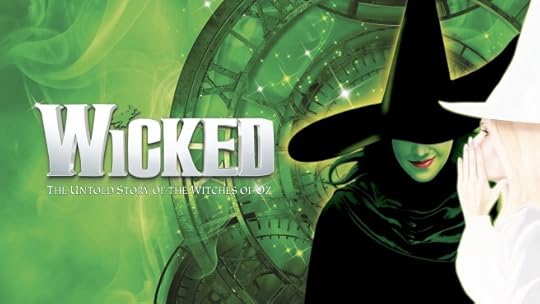
For those who don’t know either, they both go in a significantly different direction than the original. Maguire’s version is by far the darkest, injecting a preoccupation with religion, lust, and violence quite foreign to the spirit of Baum’s creation. It has a compelling kind of poetic inventiveness of its own, although I found it lost energy and made no sense at the end. And it’s definitely adult fare, not meant for the preteens who flock to the musical with its girl-power theme and sanitized, feel-good ending. I enjoyed my reread, but I still tend to prefer the earlier versions (both book and movie).
Next, I read Making It So, Patrick Stewart’s wonderful memoir about his unlikely rise from poverty in Yorkshire to the bridge of the Starship Enterprise and beyond. That led me to watch his acclaimed Macbeth, which moved from a tiny festival production to the West End to Brooklyn to Broadway, and was captured by PBS in a weird underground bunker to complement the modern-dress Cold War setting. I was not entirely in accord with some of those directorial decisions, but it was certainly interesting to watch. 70s slasher films seemed to be another inspiration, giving rise to some gratuitous gore, and I skipped over the witches doing a rap version of “Double, double, toil and trouble,” which made me especially uncomfortable. The “sandwich scene,” which Stewart describes conceiving and creating in his book, was a more subtle highlight.
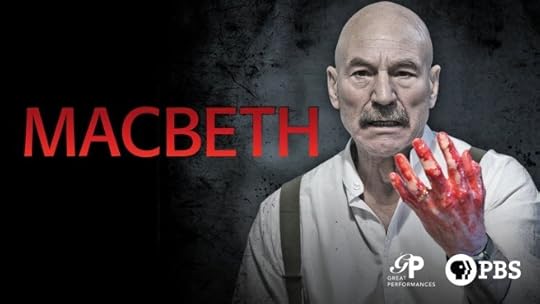
For something completely different, I also checked out the film of Match, made by Stephen Belber from his own stage play. From reviews of the stage version, it sounds like Frank Langella really camped up the starring role as a flamboyant bisexual ballet master, while Stewart gave the role a more restrained and emotionally touching character.
I seem to gravitate toward backstage mysteries, and this year I found two that also happened to count for the 1937 Club: Vintage Murder by Ngaio Marsh and Dancers in Mourning by Margery Allingham. I didn’t warm to the first, a too-complicated puzzle mystery with forgettable characters, but found the second more satisfying as a psychological study of the pressures of fame.
A third, lesser known Golden Age mystery, Death on the Down Beat, had an unusual epistolary format that didn’t quite work (would a detective really send all the evidence in letters to his wife?) It seemed to have been conceived at the moment of hearing a Strauss piece and thinking “This would be the perfect moment for a murder!” That was creative, but a bit thin as a premise, and the lack of active scenes had a distancing effect.
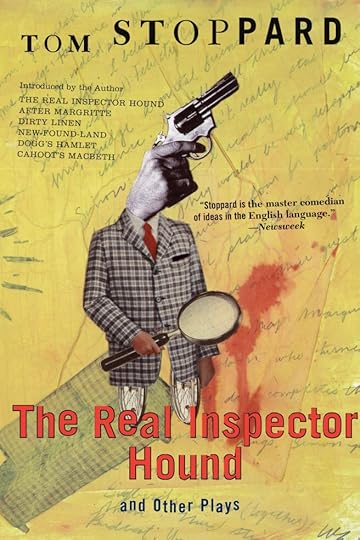
Continuing in the mystery vein, I went after Agatha Christie, curious to read her classic plays The Mousetrap and Witness for the Prosecution. I also read parts of Curtain Up: Agatha Christie, A Life in the Theatre but once again this book seems meant for die-hard fans, particularly those fascinated by the details of financial arrangements and theatrical contracts. I did learn some interesting tidbits as I skimmed the parts about these two most famous plays.
I enjoyed reading the plays, as well as Tom Stoppard’s parody The Real Inspector Hound, which skewers a lot of the things I find absurd about Christie along with the pretensions of theatre critics.
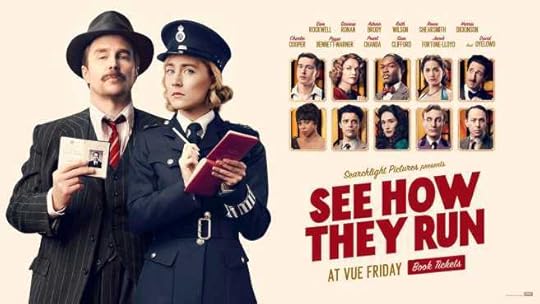
For watching along I found a recent film called See How They Run, which makes a comic murder-mystery fantasia out of the 100th performance of The Mousetrap. And it was fascinating to watch the Hollywood version of Witness for the Prosecution and notice what was changed from the stage — notably beefing up the barrister’s part for Charles Laughton (the original onstage Poirot, I learned from Curtain Up), adding a comic part for his wife, Elsa Lanchester, and providing a suitable vehicle for Marlene Dietrich as a suspicious “foreign” woman.
Having read the play, I knew all about the multiple-twist ending, but it was entertaining to see my husband and son taken by surprise. Christie does know how to play with an audience!
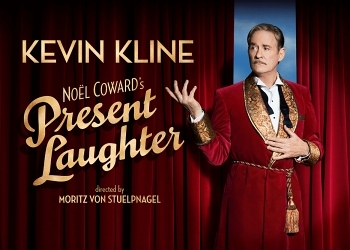
I then read a couple of romantic comedies by Amy Poeppel, Limelight and Musical Chairs. Poeppel’s books are decidedly about “rich people’s problems” — one centering on a mother whose move to Manhattan has not gone as planned, the other a cellist with a famous and overbearing conductor-composer father. But they nevertheless managed to charm me with some endearing characters and comic situations.
The obvious watch-along would be Charlie Chaplin’s movie Limelight, which Poeppel imagines being made into a Broadway musical with a sullen teenage pop star, but I have not yet gotten around to that. Instead I watched the Great Performances video of Kevin Kline in Noel Coward’s Present Laughter — Poeppel imagines Kline coming off his Tony win for that role to star in her invented show. Kline was great, along with some of his older co-stars, but I found the younger actors distressingly shrill and nervous. They could stand to learn something from their elders, I thought.
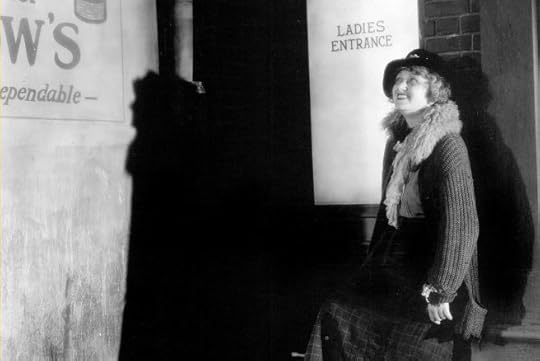 Salka Viertel in the Garbo film “Anna Christie”
Salka Viertel in the Garbo film “Anna Christie”Speaking of theatrical elders, a random library catalog search for “theatrical memoir” turned up The Kindness of Strangers by Salka Viertel, a NYRB rediscovery. Viertel grew up in a wealthy and musical Jewish family in Galicia (now Ukraine). She was determined to be an actress, while her brother became the foremost interpreter of Schoenberg’s music. She tells vivid stories of her theatrical mishaps along with her successes, giving a priceless view of the central European theatre in a time of transition to modernity.
After marrying and moving with her husband to California she became a screenwriter, mainly trying to create vehicles for her friend Greta Garbo that the Hollywood system tended to sabotage or dumb down. I found it sad that her family life ended up being troubled — she makes light of this, but the way she and her husband ran around with other lovers must have been hard on the three kids. However, Viertel was clearly a vital and courageous personality and I was glad I happened upon her story. She generously aided many refugees, and was a focus of the exile community in Hollywood, where her helping efforts sometimes backfired (trying to get a job for Schoenberg to write movie music, for example, was not a good idea.)
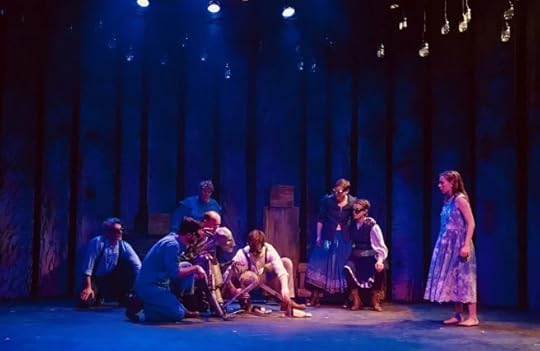
Returning to Oz, to round things out I found an odd little show to watch called The Woodsman, which imagines the backstory of the Tin Woodsman. Played in a tiny theater, in an imaginative near-wordless staging, its story was told through mime, music, and puppetry. It was truly original, a good reminder that the magic of theatre does not reside in flashy effects or star power. A couple of actors, some sticks and boxes, and simple costumes on a bare stage can conjure up a whole world.
There were so many other things I could have read or seen, but I have to leave those possibilities for next time. I was happy that a few blogging friends joined in with their own discoveries. Please let me know if I missed any.
Theatre at Literary Potpourri A Bullet in the Ballet and Quick Curtain at Staircase Wit Magic Flutes and Volpone at Calmgrove Quick Curtain at She Reads NovelsMay 5, 2024
Month in Review: April 2024
April was my month for Reading the Theatre, and most of my reading did fall into that theme, with a few exceptions — and some cross-pollination with other challenges, like the Nonfiction Reader and the 1937 Club. I’ll do a full recap in a week or two (I’m still finishing up some viewing).
It was a wonderful month once more, and I also appreciate those who joined in the fun! Be sure to let me know if you posted anything so I can link up.
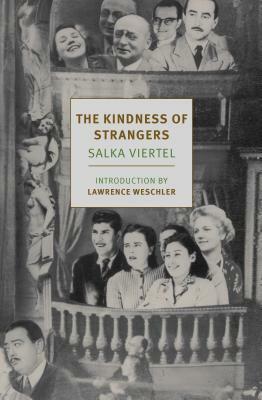 The Road to Oz
by L. Frank Baum – Reread, Ozathon
Wicked
by Gregory Maguire – Reread
Making It So
by Patrick Stewart – Nonfiction Reader
Vintage Murder
by Ngaio Marsh – 1937 Club
Outofshapeworthlessloser
by Gracie Gold
Musical Chairs
by Amy Poeppel
Death on the Down Beat
by Sebastian Farr
Limelight
by Amy Poeppel
Dancers in Mourning
by Margery Allingham – 1937 Club
The Man in the Picture
by Susan Hill
The Kindness of Strangers
by Salka ViertelLanguage
The Road to Oz
by L. Frank Baum – Reread, Ozathon
Wicked
by Gregory Maguire – Reread
Making It So
by Patrick Stewart – Nonfiction Reader
Vintage Murder
by Ngaio Marsh – 1937 Club
Outofshapeworthlessloser
by Gracie Gold
Musical Chairs
by Amy Poeppel
Death on the Down Beat
by Sebastian Farr
Limelight
by Amy Poeppel
Dancers in Mourning
by Margery Allingham – 1937 Club
The Man in the Picture
by Susan Hill
The Kindness of Strangers
by Salka ViertelLanguageWith an English student I started reading Diary of a Wimpy Kid — easy reading for native speakers, but not that simple for a learner. My student was reassured to hear that it’s not just her! Colloquial language, middle-school slang, and slurred words like “gonna” are challenging, but also useful and important for understanding how people actually talk. So we’ll keep going with Greg’s adventures and see how far they take us.
In my own learning, I’ve almost finished Jim Knopf und Lukas der Lokomotivführer, and been impressed that I can read it mostly without a dictionary…daily effort does pay off, it seems. Next, I’m looking at a copy of Cornelia Funke’s Tintenblut (Inkspell) that I picked up for free. It’s the second part of a trilogy, but maybe that won’t be a problem. Have you read it? What do you think?
 Life
LifeThings are in transition all over, with my husband retiring, my son changing gears in his schooling, and me wondering whether I should stay in my current job or seek something else, possibly re-training so I have more opportunities within the Swiss system. It’s all a bit disorienting, and unclear what the future will bring. But I try to have trust and take one day at a time.
My book being published has also left me with something of a creative gap. What should I do to fill it? I have lots of tasks to take up my time, but nothing that’s quite so close to my heart. When something arises, I’ll let you know.
Linked at The Sunday Post at Caffeinated Book Reviewer, the Sunday Salon at Readerbuzz, and the Monthly Wrap-up Round-up at Feed Your Fiction Addiction
April 30, 2024
#Ozathon24: April Wrap-up
This is the place to collect posts on The Road To Oz, our April read for the Ozathon.
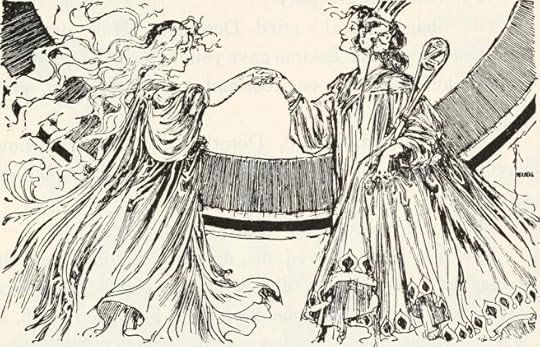 Polychrome meets Ozma – illustration by John R. Neill
Polychrome meets Ozma – illustration by John R. NeillHere’s what I’ve gathered. Please let me know if I missed your post!
Entering the Enchanted CastlePuss RebootsStaircase WitRosie Amber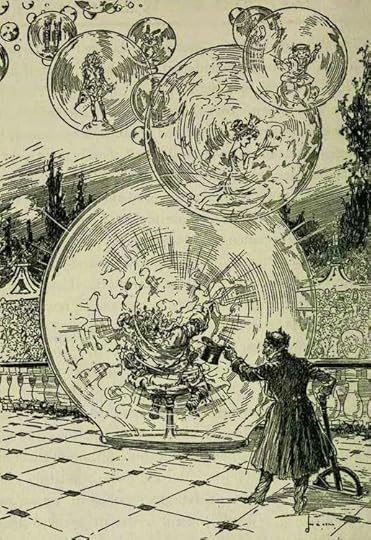 Leaving Oz in magic bubbles — illustration by JRN
Leaving Oz in magic bubbles — illustration by JRNBe sure to visit The Book Stop in May for posts about The Emerald City of Oz, the final book in this stage of the journey. Even if you didn’t like the last two books so much, you might still find yourself enjoying this one, with which Baum (unsuccessfully) tried to bring the Oz series to a close.
April 27, 2024
Nonfiction Reader Challenge: Making It So
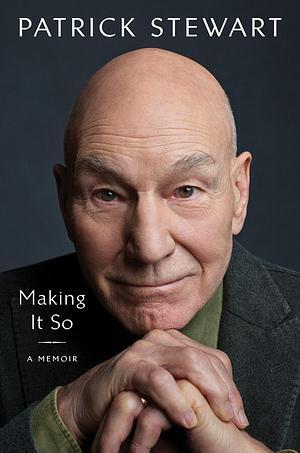
With his patrician voice, I had no idea that Patrick Stewart came from a working-class Yorkshire background. In this memoir, he tells how he made it from obscurity to worldwide fame, and from a way of life that was practically Victorian into shows and movies that imagine a space-age future.
The first part of this book was the most interesting for me, with all the details of that time and place, another world by now.
It was moving to learn of the people who generously helped him along the way, mentors and teachers, simply because they wanted to give a talented boy a chance. Learning about his training and growth as an actor was fascinating and inspiring.
On the other hand, it was sad to read of the hardships of his childhood and the violence of his father — which he doesn’t actually dwell on in much detail, but that clearly had a huge impact on him and remains very difficult to heal from. Maybe many actors want to enter the imaginary world of the stage to escape such real-life traumas; Stewart admits that it could be so in his case.
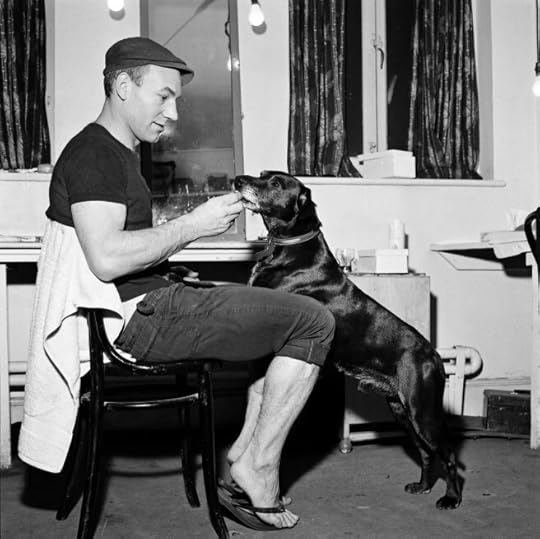 A dog named Blackie costarred with Stewart in The Two Gentlemen of Verona, sometimes stealing the show
A dog named Blackie costarred with Stewart in The Two Gentlemen of Verona, sometimes stealing the showAfter he became successful, although it was entertaining to read about his famous friends and some backstage stories, I found it somehow less compelling. Maybe that’s because though STTNG amped up his fame and fortune tremendously, and had some clever and thought-provoking episodes, it was a bit of a step-down from Shakespeare and Co. Still, Stewart kept his hand in the theatre game, and comes across as classy without being snobby. He likes to poke fun at his earlier, clueless self, like the time he met Sting when filming Dune and thought he played double bass in a police band.
It seems to be in Hollywood that he really learned how to loosen up and enjoy life more. He refers several times to a story about how he sternly told his STTNG compatriots in their first season that they “were not there to have fun.” After a moment of silence they all cracked up. In time, he accepted that they were right and he was wrong, and clearly this was a turning point in his life.
Stewart admits he’s made mistakes in relationships, and gone through a spell of substance abuse too, but he comes across as trying to recover his integrity and do the right thing. He appears humble about his achievements and grateful for his success. The most troubling thing is that with all the love showered on him by his audiences, he seems to have ended up estranged from his children. It’s not easy having a parent so much in the public eye.
Anyone who’s interested in theatrical memoirs will benefit from this, as well as those who enjoy Stewart’s shows and movies. I was really glad to have learned more about the man behind the roles.
For more vintage photos, see this gallery from Yorkshire Live
Read for the Nonfiction Reader Challenge (Memoir or Biography), and for Reading the Theatre
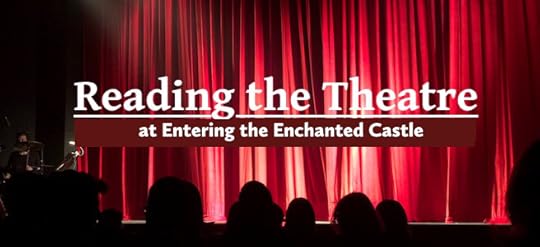
April 20, 2024
#Ozathon24: Taking a different road
In The Road to Oz, the fifth Oz book, author L. Frank Baum eschewed the cataclysmic methods he’d previously used to get Dorothy to Oz (cyclone, storm at sea, and earthquake), and took a different tack by having the ordinary road she was walking on quietly turn into an otherworldly portal. When I was reading the books as a child I was enchanted by this idea, always looking for the subtly different pathway that might lead me into a magical world. Alas, I never found it, but I think I’m still looking.
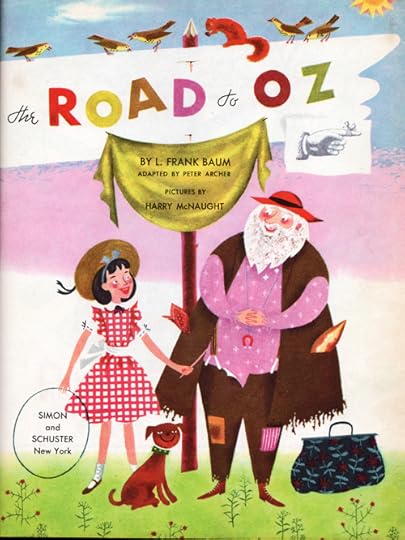 In looking up images for this post, I discovered that there were Little Golden Book editions of some of the Oz books — with a very different vintage flavor than the classic Neill illustrations!
In looking up images for this post, I discovered that there were Little Golden Book editions of some of the Oz books — with a very different vintage flavor than the classic Neill illustrations!Dorothy’s adventures are quieter this time, too, with encounters with a city of foxes and another of donkeys providing some mild whimsy and satire. Only once does she have to escape a murderous clan of Scoodlers, one of Baum’s many menacing subgroups with a physical peculiarity — in this case being able to take off and throw their own heads.
Fortunately, Dorothy has collected a new band of traveling companions who can help her through such challenges: the Shaggy Man, who is happy to walk in any direction except the one where someone owes him money; Button-Bright, an adorable but dim toddler; and Polychrome, the Rainbow’s daughter, who provides an ethereal touch to the party.
All of these have lost something — family, home, a place in ordinary society, but they gladly form a new alliance which transcends outer differences and acknowledges that everyone has a right to look for security and love.
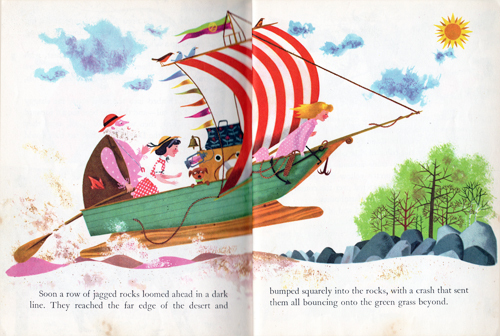
The Shaggy Man is the most interesting character in this respect. He carries the Love Magnet, which causes everyone to love him in spite of his unlovely outer appearance. But as it turns out, his story about how he acquired this device is not entirely true. Love and truth have to come together to achieve real integrity, and the Shaggy Man must let down the deceptive defenses which we think we need to survive in the ordinary, non-magical world. Instead, he must trust that he can be loved for his real self.
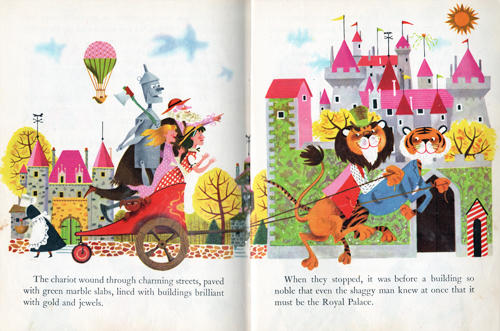
Oz is becoming more and more a place of plenty and harmony, a promised land that represents eternal values, rather than a location of deceptions and dangers — at least in its heart, the Emerald City ruled by Ozma. For the first time we hear that there is no money in Oz, whereas there definitely was, in earlier books. And the Shaggy Man’s acceptance as a citizen of Oz, once he promises to be true and gives up the Love Magnet, shows that wealth and outer appearance are not the measure of worth in this land. I think that’s another reason I always found it so compelling, while also enjoying the lavish descriptions of royal splendor that Baum paradoxically loved to describe.
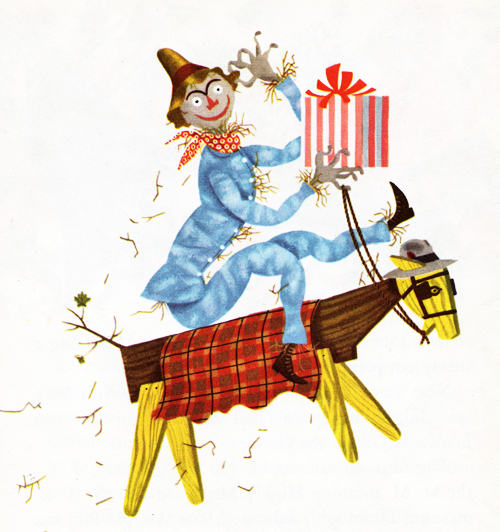
The conclusion of the book, Ozma’s grand birthday party to which she’s invited many visitors, is transparently simply an opportunity for Baum to insert characters from his other books, probably hoping that readers would be attracted to them and away from Oz as he tried to wrap up the series.
That didn’t work, though he made one major attempt in the next book, which will also conclude the first part of the Ozathon.
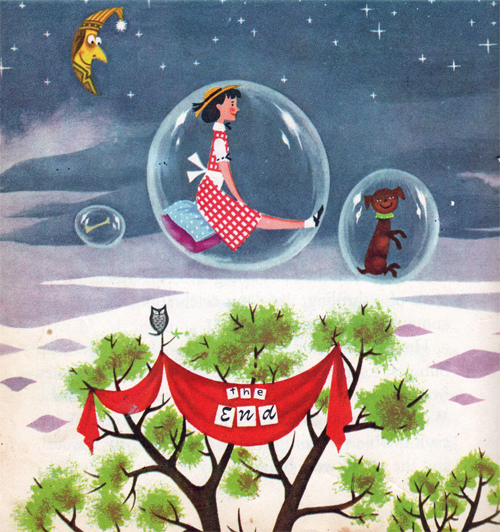
If you’ve been along this far on the journey, please share your posts in the comments here, and I’ll include them in the wrap-up at the end of the month. And if you’ve fallen behind, don’t worry! You are very welcome to link up your Oz-related posts at any time during the year.
L. Frank Baum, The Road to Oz (originally published by Reilly and Britton, 1909)
Images from the Little Golden Book version of The Road to Oz, found here.
April 17, 2024
#1937Club: Vintage Murder
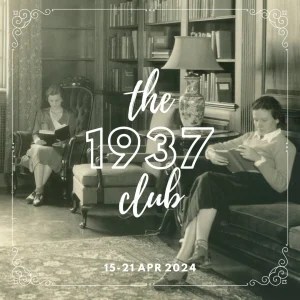
I always enjoy joining in with Karen and Simon‘s club weeks when I can, and this time I managed to overlap with my own Reading the Theatre month. The featured title is one of Ngaio Marsh’s classic mysteries, fifth in her Roderick Alleyn series and the second one to feature a theatrical setting. Marsh, as you may know, was a theatre director herself. She also hailed from New Zealand, and as this book took Alleyn there along with a traveling theatre company, I expected it to be an interesting combination of setting, character, and plot from a knowledgeable writer.
Alas, I was disappointed. I had read Marsh’s first theatrical mystery, Enter a Murderer, which turns on the who-put-real-bullets-in-the-prop-gun device. It failed to thrill me, for reasons I can’t even clearly remember now, but I thought I’d give the author another chance. In this one, the large cast of characters failed to distinguish themselves to me — the men., that is; the three women, a gorgeous star actress, an irritating and talentless ingenue, and a portly character actress, are easy enough to tell apart, while not having much depth or nuance. I had a hard time keeping track of the rest, and I didn’t care much about them, after the nicest one got killed off in an absurdly far-fetched way at the outset.
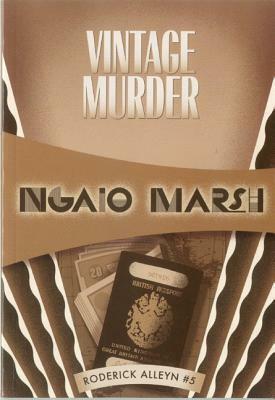
The solution to the mystery was also the far-fetched kind that I find annoying, one of those that hangs on the problem of who could have been in a certain place at a certain time, and might as well be a logic problem plotted out on a chart with A, B, C instead of names. (Marsh actually did include a chart, which I skipped over.) The key to such a mystery is the elaborate way of ensuring that the murderer could be in the crucial place and time without anybody seeing them, preserving their alibi. I find this kind of puzzle simply boring, when not complemented by interesting psychology or at least a vivid sense of place.
There was a smidgen of local color when Alleyn took the star actress out into the New Zealand wilds to let nature work its magic and move her to fess up what she’d been hiding. Fortunately he didn’t get quite as up close and personal with his subject as he did in Enter a Murderer, but the episode was still distasteful. Also distasteful was his attitude, and everyone else’s, to Maori people, customs, and artifacts. Savages and monsters, all, even when they practice Western medicine or are given as amusing presents from one white person to another.
The book, that is to say, definitely smacks of 1937, and it could have been worse. At least Alleyn objects, though only mentally, to the habit many of his compatriots have of calling men “white” as a compliment.
So my second Ngaio Marsh left me cold, and I wonder if I should try any others. Do you have any favorites by this author? Anything with a bit more depth? Or did you read something else from 1937 that you can recommend?

April 14, 2024
Guest Post at Better Living Through Beowulf
Today, Robin Bates, a blogging friend (and fellow Carleton graduate) has kindly invited me to write about the origins of my book, When Fragments Make a Whole. Check it out at his blog, Better Living Through Beowulf.
While you’re there, you may want to browse around a bit — Robin, a retired literature professor, always has fascinating reflections to share, and often highlights wonderful poems you might not have heard of.

April 6, 2024
Month in Review: March 2024
Before looking back on last month’s reading, I want to point to this month’s giveaway of my book, When Fragments Make a Whole: Click here to learn more and enter.
LiteratureIn March, I enjoyed books by two new favorite authors. Abraham Verghese is a doctor-turned-novelist who writes long but gripping stories. And after working my way through all of Dani Shapiro’s memoirs, I’ve now sampled some of her fiction. (So far, I prefer the memoirs, but I’d try another novel.)
Revisiting old favorite authors is always lovely as well, of course … such as Willa Cather and Diana Wynne Jones, two of the best. Thanks to Calmgrove for keeping the March Magics event going — I was glad to see more bloggers are reading DWJ for the first time, to revisit one book I’d only read once myself, and even to link to an interview by my son.
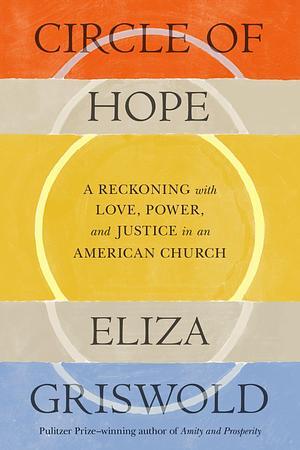
Books read in March:
The Covenant of Water and Cutting for Stone by Abraham VergheseStill Writing and Signal Fires by Dani ShapiroMy Antonia by Willa Cather – reread Enchanted Glass by Diana Wynne Jones – reread, March MagicsOther bookish posts this month:
Make me read it , Books I got for free edition Nonfiction Reader Challenge: I reviewed Circle of Hope by Eliza Griswold, a thought-provoking tale of trouble in a liberal church.The Ozathon reached the fourth Oz book, Dorothy and the Wizard in Oz . I announced that Reading the Theatre will be back in April.LanguageI’ve added a couple of English students to my schedule and enjoy reading books with them. One advanced student allowed me to press My Antonia on her, even though it was not her usual kind of thing. (She prefers Poe, Lovecraft, and such.) But she did enjoy it, to her surprise. I reread it myself and found that we responded to the same things: the characters, the sense of place, and the beautiful language.
My student wondered why she’d never heard of Cather, and I agree it’s a shame she’s not better known. I try to do my small part by encouraging English learners to give her a try. I’d rather read her than Hemingway any day, myself.
 Life
LifeThere’s still snow in the higher reaches of the Alps here, and my husband wanted to take advantage of our spring vacation to go skiing. We drove to Grindelwald and from there took a super-speedy gondola that whisked us to the slopes near the north face of the Eiger. It was a lovely day! I even ventured to do some walking on the groomed hiking paths.
Maybe I had too much time on my hands in vacation, because I decided to start a new Substack newsletter, Healing Stories and Sacred Songs. I enjoy recommending some of my favorite writing to be found on the internet, as well as quotes from my reading. I hope to add more resources for contemplative reading and writing in the future. Check it out if you’d like!

Linked at The Sunday Post at Caffeinated Book Reviewer, the Sunday Salon at Readerbuzz, and the Monthly Wrap-up Round-up at Feed Your Fiction Addiction
April 4, 2024
#Ozathon24: The Road to Oz
Who’s still with us for the Ozathon? This month’s book is The Road to Oz, which you’ll find quite a change of pace after last month’s infernal adventures. Some might even call it a tad boring … but it has its own points of interest, too. It’s even a favorite for some readers, who appreciate its festive and welcoming spirit. (See for example this article by Paul Miles Schneider, author of an Oz-inspired series.)
As usual, Deb and I will be sharing our thoughts, and at the end of the month I’ll be doing the round-up post to assemble any others who have joined us. See you on the road!
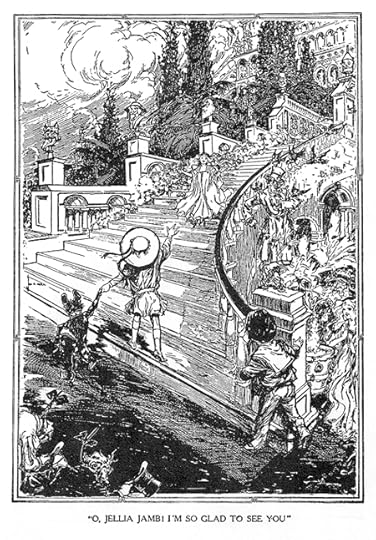
April 2, 2024
Giveaway – When Fragments Make a Whole
To celebrate the American distribution date of my book, When Fragments Make a Whole, I’m offering a giveaway. One print copy, worldwide wherever Blackwells delivers. If you’d prefer an e-book, I can arrange that instead.
To learn more about the book, visit this page.There are many ways to earn additional chances to win, but subscribing to my newsletter, The Enchanted Circle, will get you five times as many. Just use the form underneath this post. Current subscribers qualify, of course.
Use the Rafflecopter widget to enter. You can use an email to enter if you don’t want to login with Facebook. If you have any difficulties let me know.
Thank you and good luck!
a Rafflecopter giveaway